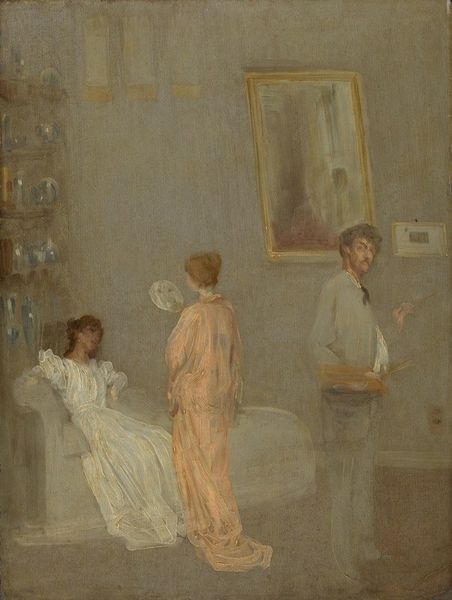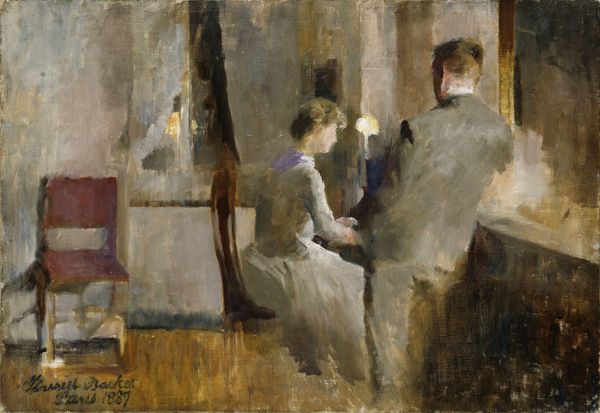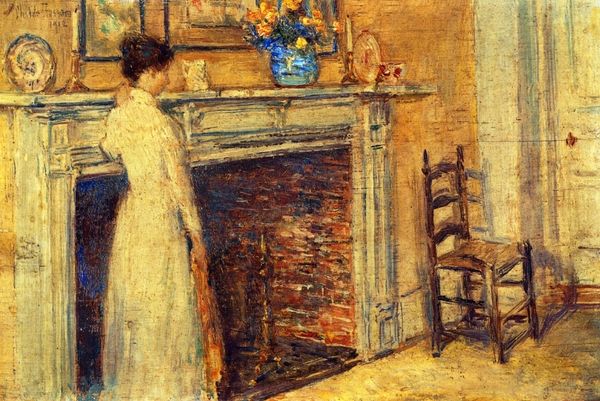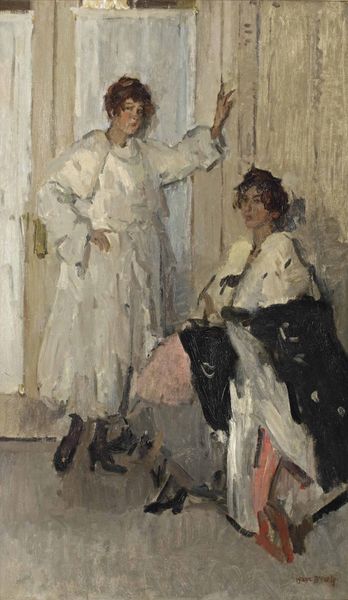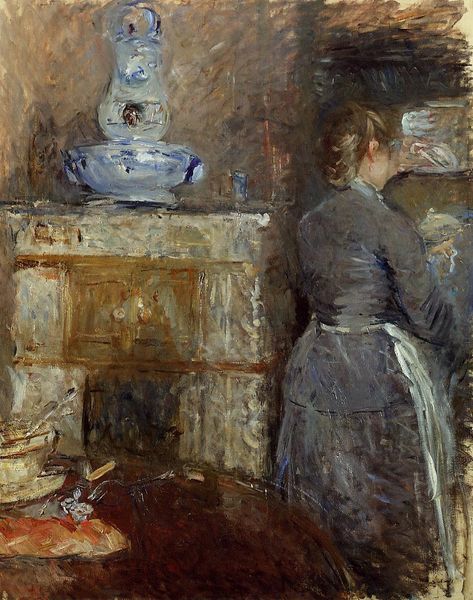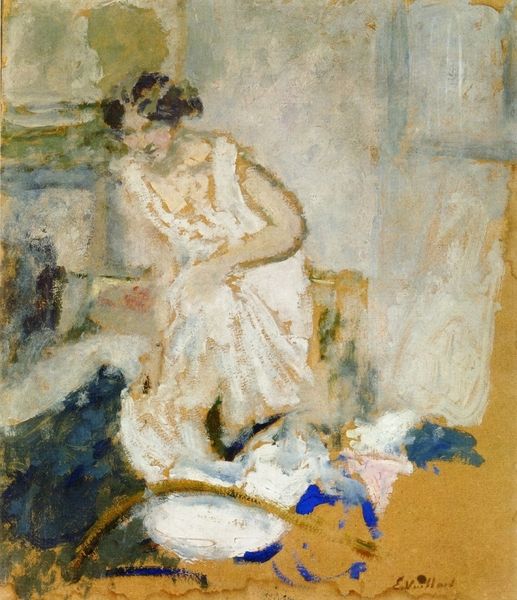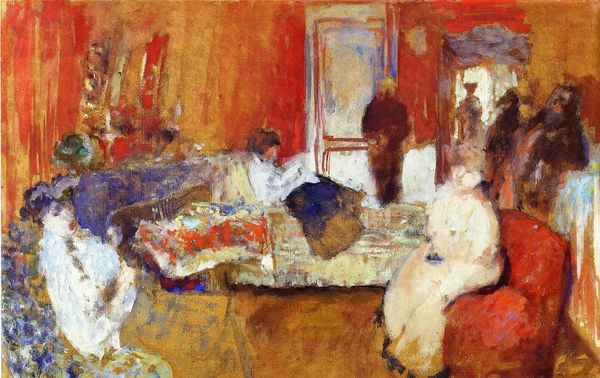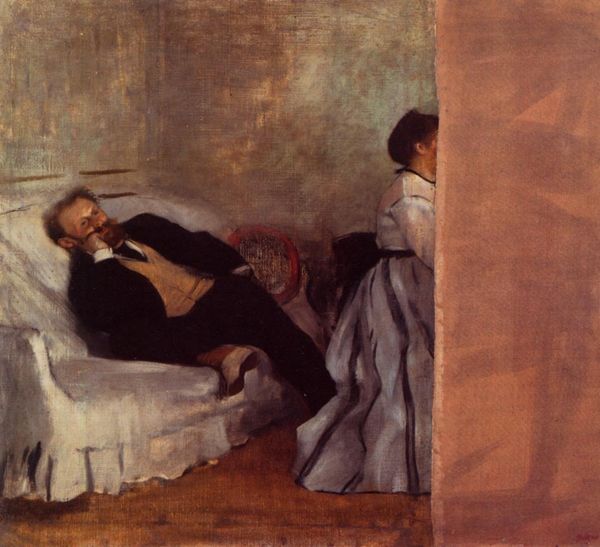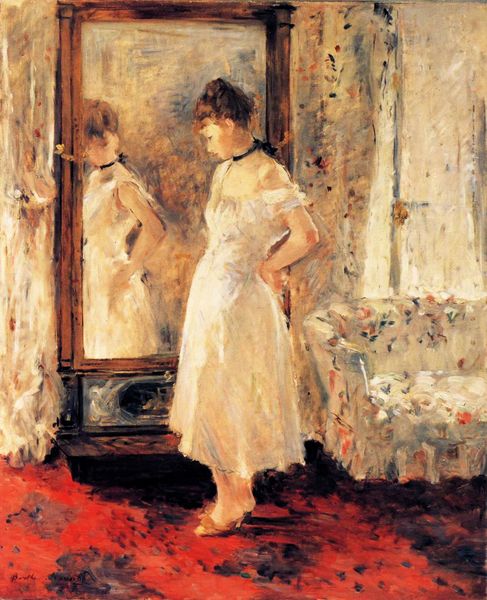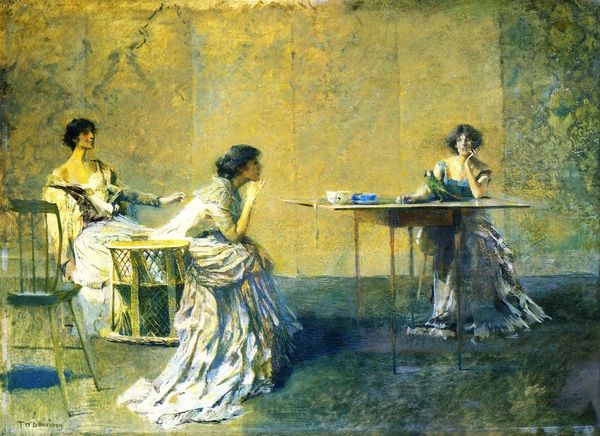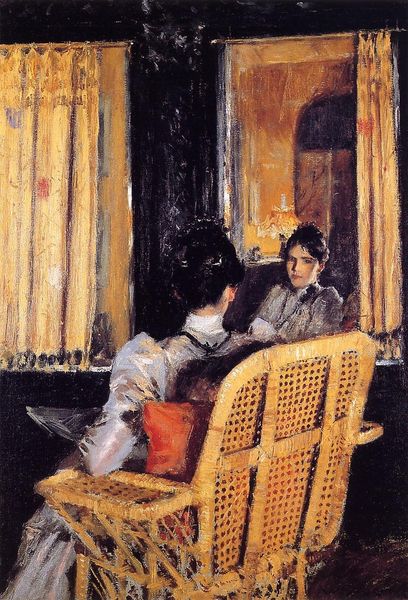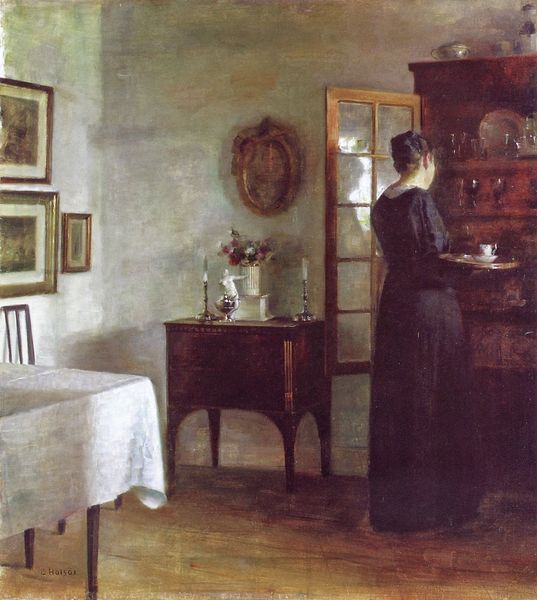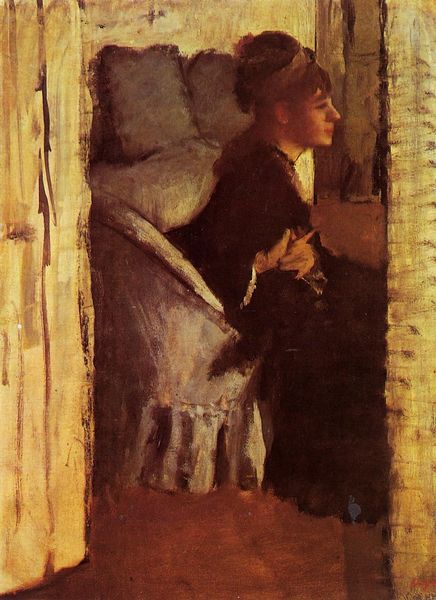
oil-paint
#
portrait
#
gouache
#
impressionism
#
oil-paint
#
oil painting
#
genre-painting
#
watercolor
#
realism
Dimensions: 46.3 x 62.2 cm
Copyright: Public domain
Editor: This is "Whistler in his Studio," painted in 1865 by James Abbott McNeill Whistler, using oil on canvas. I’m immediately struck by the overall blue-ish tone and the way the figures almost seem to blend into the background. How do you interpret this work, particularly with its muted palette? Curator: The ethereal quality you noted is key. Consider how Whistler renders not just a scene, but a state of being. Note the mirror behind him, reflecting the studio’s depth, while he himself seems lost in thought. Think about how the mirror symbolizes self-reflection. Do you see how the women function almost as muses? Editor: Yes, I see what you mean. It's as if the studio itself is an extension of Whistler's mind. Is there a particular reason why he painted himself in such an introspective manner? Curator: Absolutely. This wasn't simply a portrait, but a declaration. Whistler championed "art for art's sake," a concept reflected in the haziness and subdued palette. It's as if he's saying the subject isn't as important as the feeling, the emotional response evoked in the viewer. The lack of narrative clarity enhances the work’s symbolist qualities, asking us to look beyond representation toward subjective meaning. Editor: That makes perfect sense. So, the ambiguity in the scene is not accidental, but a deliberate artistic choice. It seems less about capturing a moment and more about expressing a feeling. Curator: Precisely. He’s using the studio, its occupants, and his own image to convey the inner world of the artist. By presenting a kind of ambiguous snapshot, he urges viewers to project their feelings. Editor: I’m really starting to see the depth of meaning that’s packed into such a seemingly simple scene. It makes me appreciate the symbolic weight Whistler put into this piece. Curator: Indeed, seeing how the external world shapes—and is shaped by—our interiority is invaluable, is it not?
Comments
No comments
Be the first to comment and join the conversation on the ultimate creative platform.
